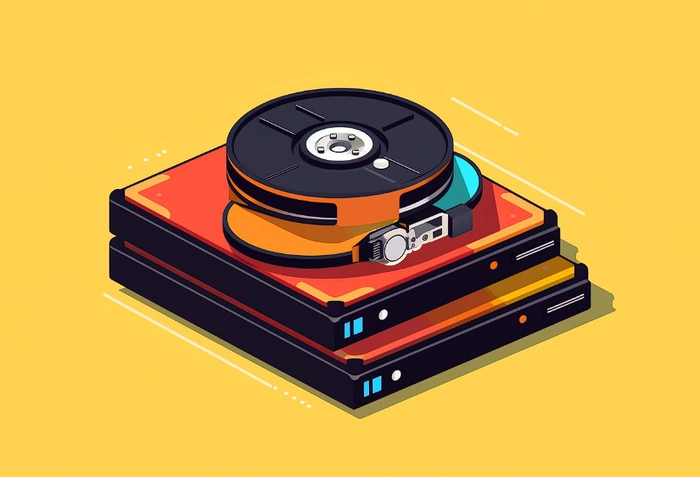
Using external hard drives is one way to store your precious media, photos and important documents but once you get to a certain capacity levels it might be worth upgrading. Building a Network Attached Storage (NAS) system is a popular choice for many tech enthusiasts. However, the process is not without its pitfalls. This NAS building beginners guide aims to provide more insight regards the process of building a NAS, highlighting five common mistakes that you might possibly make allowing you to avoid any potential mishaps along the way.
What is a NAS?
For those that are new to building Network Attached Storage units or NAS systems, they are a computer specifically designed to be a dedicated file storage device that provides centralized storage accessible over a network. As well as other handy utilities such as a download manager, being able to access your files remotely using a VPN and more. If you would like an already built NAS then Synology and others offer a wide range of different systems depending on your required storage.
Unlike a regular hard drive connected directly to a computer, a NAS is connected to a network and can be accessed by multiple devices simultaneously. It essentially acts as a private cloud for your home or office, allowing you to store, retrieve, and share files across different computers and devices.
- File Sharing: Multiple users can access and share files stored on the NAS.
- Data Backup: Automated backup solutions can be configured for both individual machines and networked computers.
- Media Streaming: Many NAS units support media streaming protocols, making it easy to stream video or audio content to other devices on the network.
- Surveillance: Some NAS units come with built-in support for IP cameras, providing a centralized location for storing surveillance footage.
NAS units are often used to back up data, serve files over a network, and provide a centralized location for storing important files. They come in various configurations, ranging from single-disk solutions to multi-bay units that can store several hard drives for additional storage capacity and data protection features like RAID (Redundant Array of Independent Disks).
SATA connections
Firstly, let’s talk about SATA connections. SATA, or Serial ATA, is the interface that connects the motherboard to the hard drives. One of the most common mistakes people make when building a NAS is not ensuring they have enough SATA connectors on the motherboard. This can limit the number of hard drives you can connect, thereby limiting your storage capacity. It’s crucial to plan ahead and choose a motherboard with enough SATA connectors to accommodate all your hard drives.
Guide to building a DIY NAS
Other articles you may find of interest on the subject of Network Attached Storage :
- Sony NAS-Z200IR iPod Dock Review
- Xpanstor 4 NAS storage capacity expander
- How to build a NAS from scratch using UnRAID OS
- AS54 NAS Series designed for gamers
- HyperRaid Thunderbolt 4 NAS external storage
- QNAP NAS storage solutions
- Storaxa open source cloud NAS storage
Power supply
Next, we move on to the Power Supply Unit (PSU). The PSU is the heart of your NAS, supplying power to all the components. A common mistake is choosing a PSU that lacks sufficient power, efficiency, or connectors. This can lead to system instability or even damage to your components. It’s essential to choose a PSU that can supply enough power to all your components, has high efficiency to save on electricity costs, and has enough connectors for all your components.
Cooling
When building your NAS it’s also essential to consider cooling and heat efficiency as your NAS will probably be on most of the time. A NAS system can generate a lot of heat, especially when it’s working hard. If this heat isn’t managed properly, it can lead to overheating, which can damage components and shorten the lifespan of your NAS. Many people underestimate the importance of maintaining good airflow and temperature inside the server. To avoid this mistake, ensure your server case has enough fans and ventilation to keep the temperature down.
Processing power
Another common mistake is related to the CPU choice. The CPU, or Central Processing Unit, is the brain of your NAS. It processes all the data and commands. Many people make the mistake of choosing a CPU without considering the number of PCI lanes, whether it has integrated graphics, and the number of cores. These factors can affect the performance and functionality of your NAS. For example, a CPU with more PCI lanes can support more devices, while a CPU with integrated graphics can save you from needing a separate graphics card.
Motherboard
Lastly, we come to the motherboard size. This might seem like a minor detail, but it’s actually quite important. The motherboard needs to fit inside the server case, and if it doesn’t, you’ll have a problem. Many people make the mistake of choosing a motherboard without considering the size of their server case. To avoid this, always check the dimensions of your server case and ensure the motherboard you choose will fit inside.
Building a NAS can be a rewarding project, but it’s not without its challenges. By being aware of these common areas that can cause issues such as – not having enough SATA connectors, choosing an inadequate PSU, neglecting cooling and heat efficiency, not considering the CPU’s features, and not ensuring the motherboard fits the server case – you can avoid these pitfalls and build a NAS that meets your needs. Remember, careful planning and consideration are key to a successful NAS build.
Latest Geeky Gadgets Deals
Disclosure: Some of our articles include affiliate links. If you buy something through one of these links, Geeky Gadgets may earn an affiliate commission. Learn about our Disclosure Policy.